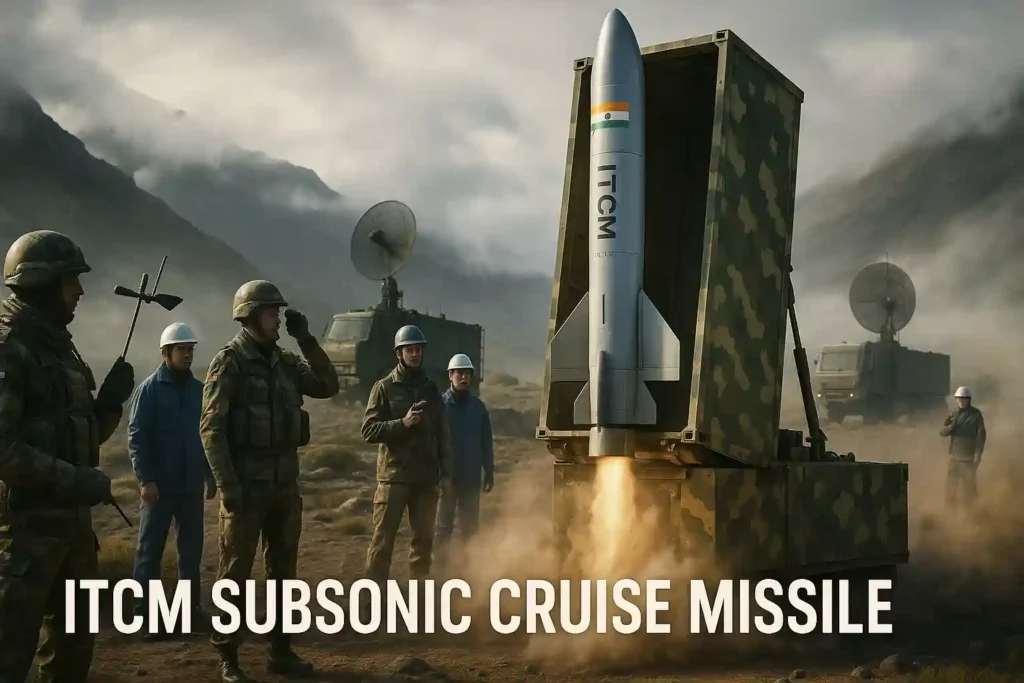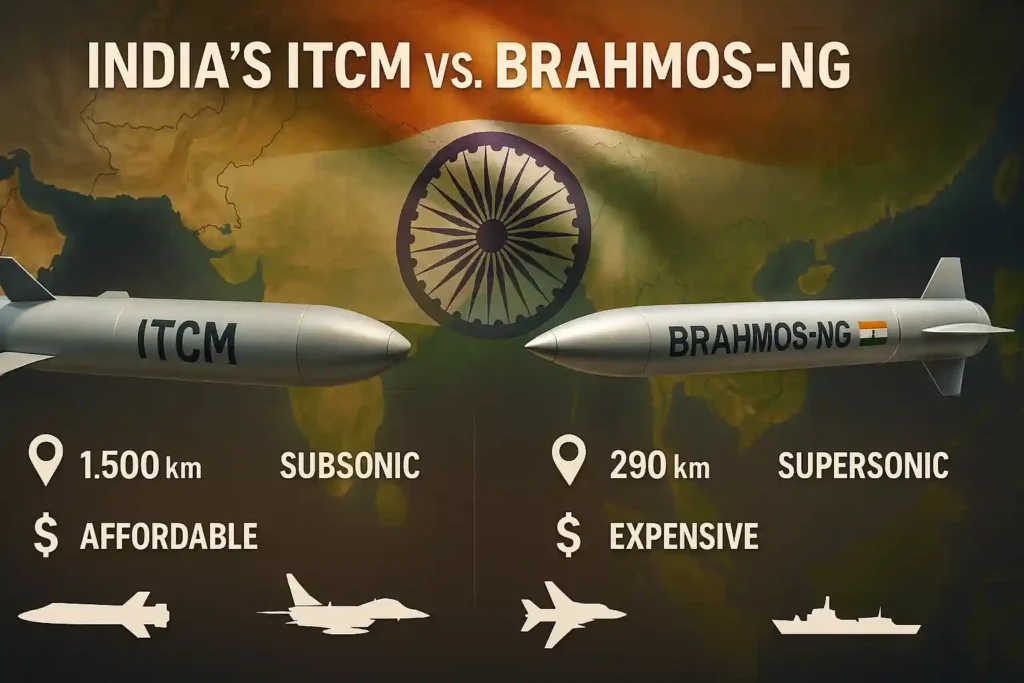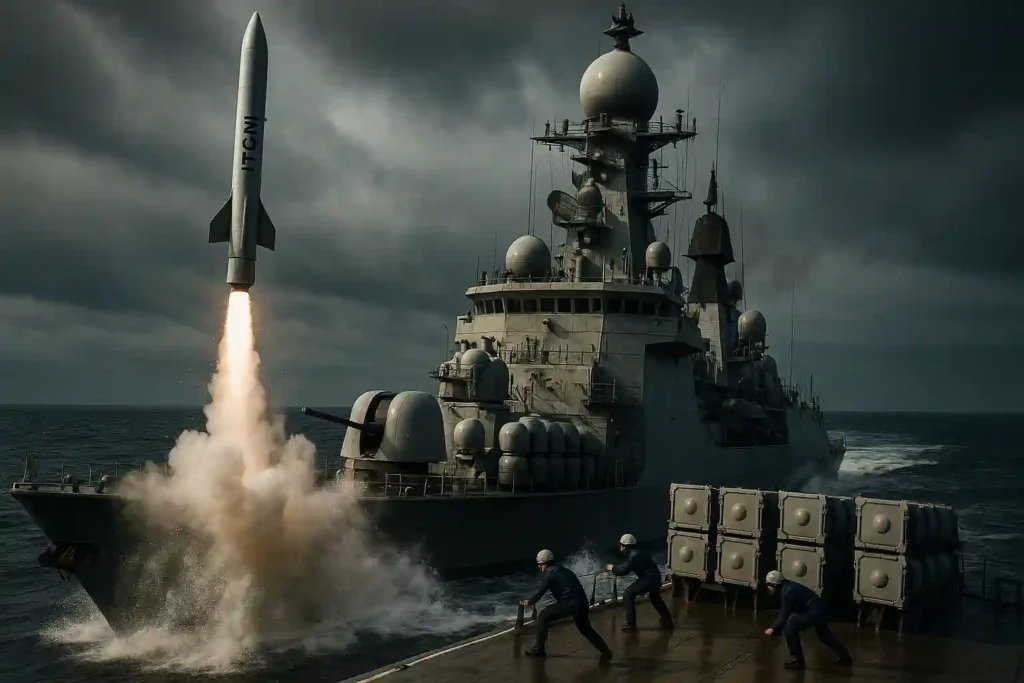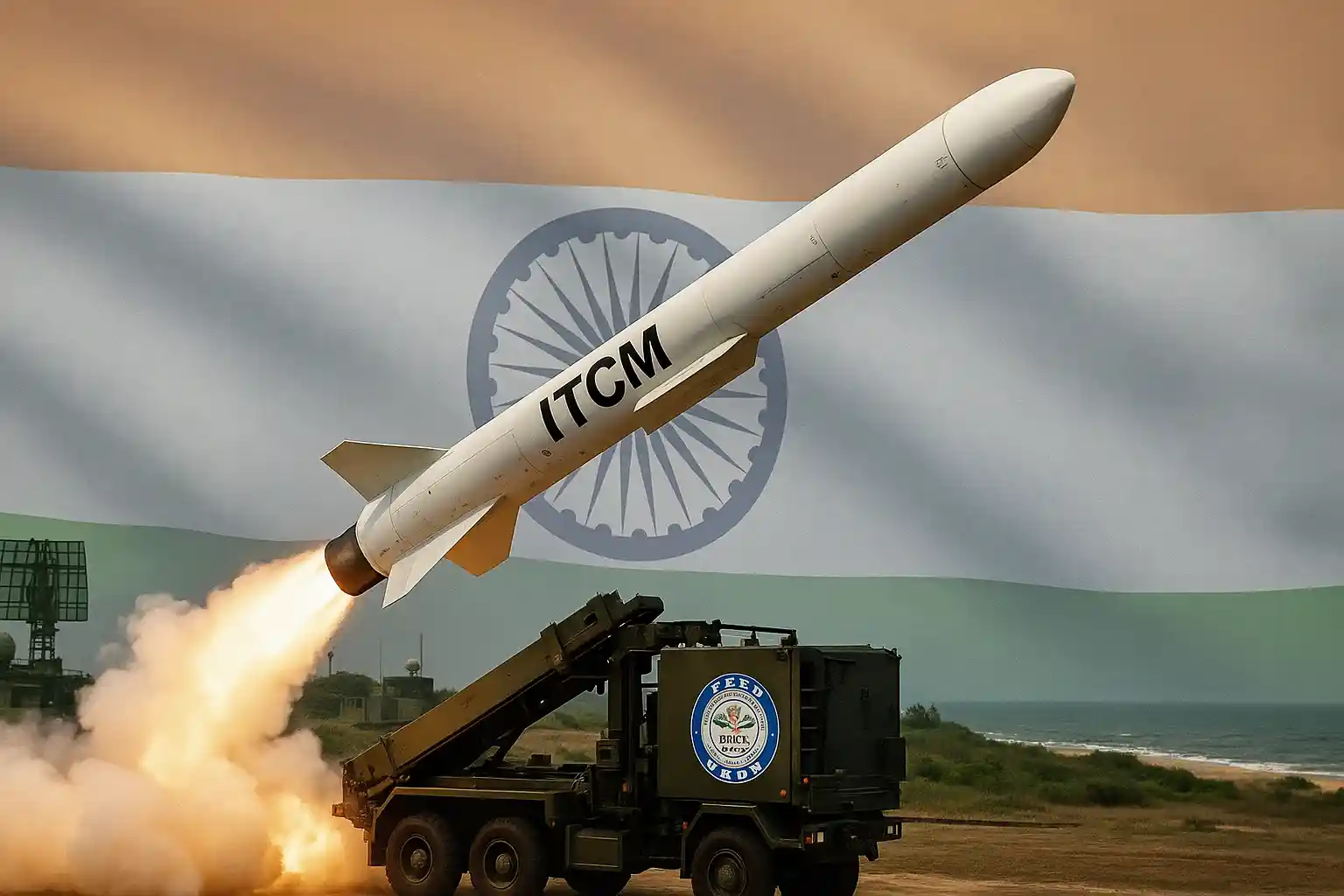In a world where warfare is evolving faster than ever, speed isn’t the only factor that determines dominance. Sometimes, what matters more is how smart, accurate, and undetected your weapons are. That’s where subsonic cruise missiles enter the battlefield — flying just below the speed of sound, staying low, and striking targets with silent precision.
India’s journey in this space has reached a defining milestone with the ITCM (Indigenous Technology Cruise Missile), a missile that represents not just firepower but self-reliance. In this article, we break down everything you need to know — from what it is, why it matters, how it works, to the benefits and India’s future roadmap.
What Is a Subsonic Cruise Missile?
A subsonic cruise missile is a guided missile that travels at a speed below Mach 1, generally around 800 to 1,000 kilometres per hour. Instead of launching high like ballistic missiles, it flies close to the Earth’s surface, using its wings and small jet engine to stay airborne for hundreds or even thousands of kilometres.

Its key characteristics include:
- Low-altitude flight to avoid radar detection
- Terrain-following navigation for stealthy movement
- Precision targeting enabled by GPS, NavIC, and onboard sensors
- Fuel efficiency and extended range, compared to high-speed missiles
In short, it’s a slow but smart missile that strikes where and when it matters, without warning.
Why Are Subsonic Cruise Missiles Important in Modern Warfare?
With modern air defences getting more advanced, flying fast is no longer enough. What militaries need today are weapons that:
- Can fly under the radar, literally
- Hit with pinpoint accuracy
- They are affordable enough to deploy in large numbers
- Adapt to multiple roles and terrains
Subsonic cruise missiles meet all these needs. They don’t just offer firepower — they offer control, flexibility, and survivability.
Why Is India Developing Subsonic Cruise Missiles?
India faces unique strategic challenges — hostile neighbours, high-altitude borders, and a vast maritime region. In such a context, weapons that can be launched from multiple platforms, fly undetected, and strike deep into enemy territory become crucial.
The key reasons for India’s focus include:
- To reduce dependency on foreign engines and technology
- To enhance indigenous long-range strike capability
- To build a scalable and affordable alternative to BrahMos
- To support tri-service operations — Army, Navy, and Air Force
- To stay mission-ready in limited-war or standoff conflict scenarios
India’s Indigenous Solution: The ITCM
The ITCM, or Indigenous Technology Cruise Missile, is India’s home-grown subsonic cruise missile developed by DRDO’s Aeronautical Development Establishment (ADE) in Bengaluru. It is powered by the Manik turbofan engine, designed by DRDO’s GTRE.

Unlike previous cruise missiles, such as Nirbhay, which used imported propulsion, ITCM is 100% indigenous, aligning perfectly with the Aatmanirbhar Bharat vision.
Notable features include:
- Speed: Close to Mach 0.8–0.9
- Range: Around 1,000 kilometres
- Guidance: GPS + NavIC + Inertial Navigation + RF seeker
- Launch Capability: Canister-based, adaptable for land, air, and sea platforms
- Flight Profile: Terrain-hugging and sea-skimming for stealth
Benefits of Subsonic Cruise Missiles Like ITCM
Subsonic cruise missiles offer a unique blend of advantages that make them essential in modern conflict:
- Stealth: Flying low helps evade radar and interception systems
- Accuracy: Advanced sensors and satellite navigation allow precise strikes
- Affordability: Lower production and deployment cost compared to supersonic missiles
- Endurance: Long flight duration makes it ideal for loitering over targets
- Versatility: Can be used in a wide range of missions — land attack, maritime strike, and more
In India’s context, these missiles fill the gap between short-range battlefield systems and ultra-fast strategic weapons.
Why ITCM Was Developed: Strategic Thinking Behind the Missile
ITCM wasn’t just a technological experiment — it was a calculated, strategic move by India’s defence establishment. It was developed:
- To end reliance on Russian turbofan engines used in the Nirbhay
- To pave the way for indigenous air-, sea-, and sub-launched variants
- To provide the armed forces with a reliable, long-range, conventional strike system
- To create a platform that can be modified and upgraded for different missions and ranges
- To allow mass production in case of prolonged conflict or standoff
It is not just a missile — it’s a modular system designed for scale and flexibility.
ITCM: A Missile Evolving into a Family
The ITCM is the base model, but DRDO has bigger plans. By mid-2025, multiple versions of ITCM are in development:

- Ground-launched version: Successfully tested in 2024 with full performance
- Air-launched variant: Now being developed for Su-30MKI, Rafale, Tejas and AMCA, with a 500–600 km range
- Naval version: Will equip warships like the Project 17B class using UVLM
- Submarine-launched variant: A smaller version compatible with torpedo tubes
- Extended-range land attack missile (LR-LACM): Over 1,200 km range tested in late 2024
Together, they form a complete subsonic strike family for India’s tri-services.
Strategic Advantages in the Indian Context
For India, ITCM and its variants offer direct tactical and strategic advantages:

- Enables deep strikes without crossing borders
- Perfect for mountain warfare and maritime control
- Gives the military a standoff capability from air, land, or sea
- Enhances deterrence without provoking large-scale escalation
- Reduces costs while increasing the number of launch options
These missiles are ideal for scenarios where political sensitivity, geography, and mission precision intersect.
Future Plans and What Lies Ahead
India isn’t stopping with ITCM — DRDO is expanding capabilities across the board:

- Air-launched version to enter live flight trials in late 2025
- SLCM (submarine-launched) projected to be ready for sea trials by 2026–27
- Work underway on AI-powered navigation and smarter RF seekers
- Export possibilities under consideration for friendly nations
- Possible dual-role configurations with both conventional and strategic payloads
The roadmap is clear — India aims to make subsonic cruise missiles not just an option, but a mainstay of its deterrence and precision warfare doctrine.
Final Thoughts: Subsonic But Super Strategic
In an age obsessed with speed, India’s approach to ITCM proves that stealth, accuracy, and strategy matter just as much. The subsonic cruise missile isn’t a step back — it’s a tactical leap forward, offering everything a modern military needs: control, flexibility, and indigenous power.
With ITCM, India has not only created a missile — it has created a blueprint for the future of cost-effective, multi-platform precision warfare. And that’s what makes it one of the most important defence milestones of this decade.
